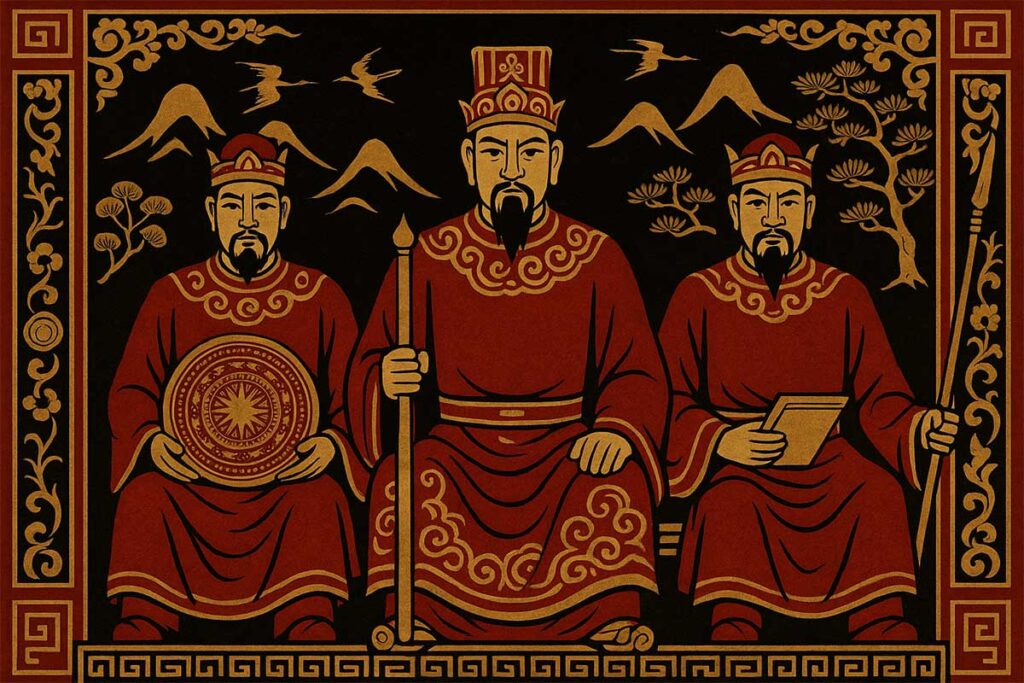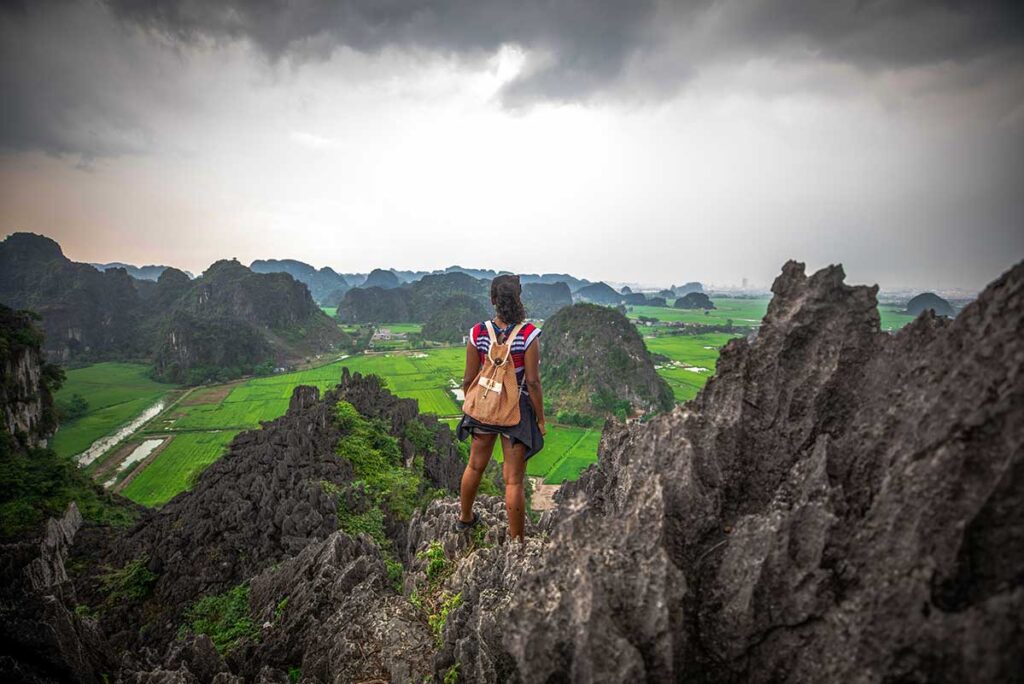Who were the Hung Kings?
The Hung Kings are remembered as the legendary founders of Vietnam, said to have ruled the country’s first kingdom, Văn Lang, thousands of years ago. They are often described as the nation’s original rulers, bridging the line between history and myth.
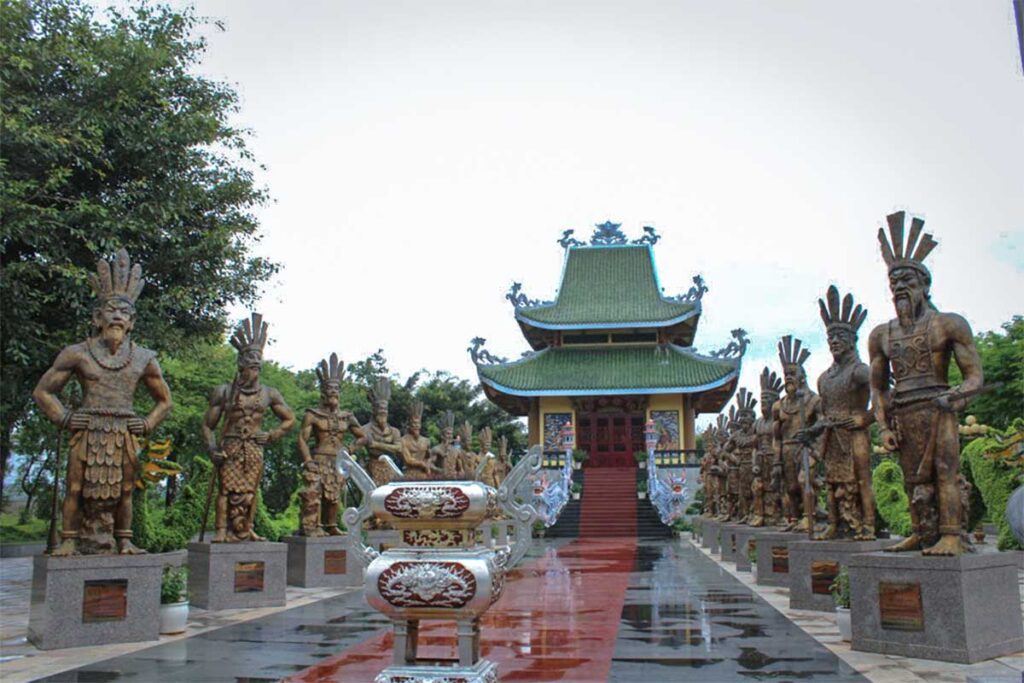
Today, the Hung Kings are best known as national ancestors. Their legacy is honored at temples, through statues and monuments, and especially during the annual Hung Kings Festival, when millions of Vietnamese pay respect to their origins. Whether you see them as historical rulers or symbolic figures, the Hung Kings remain a powerful part of Vietnam’s identity.
List of the 18 Hung Kings
Vietnamese tradition speaks of 18 Hung Kings ruling the kingdom of Văn Lang from around 2879 BC to 258 BC. Each king is remembered with the title Hùng Vương, followed by a different honorific. The list below shows the traditional order:
- Kinh Dương Vương (Lộc Tục) – 2879–2794 BC
- Lạc Long Quân (Sùng Lãm) – 2793–2525 BC
- Hùng Quốc Vương (Lân Lang) – 2524–2253 BC
- Hùng Hoa Vương (Bửu Lang) – 2252–1913 BC
- Hùng Hi Vương (Viên Lang) – 1912–1713 BC
- Hùng Huy Vương (Pháp Hải Lang) – 1712–1632 BC
- Hùng Chiêu Vương (Lang Liêu) – 1631–1432 BC
- Hùng Vĩ Vương (Thừa Vân Lang) – 1431–1332 BC
- Hùng Định Vương (Quân Lang) – 1331–1252 BC
- Hùng Hy Vương (Hùng Hải Lang) – 1251–1162 BC
- Hùng Trinh Vương (Hưng Đức Lang) – 1161–1055 BC
- Hùng Vũ Vương (Đức Hiền Lang) – 1054–969 BC
- Hùng Việt Vương (Tuấn Lang) – 968–854 BC
- Hùng Anh Vương (Chân Nhân Lang) – 853–755 BC
- Hùng Triệu Vương (Cảnh Chiêu Lang) – 754–661 BC
- Hùng Tạo Vương (Đức Quân Lang) – 660–569 BC
- Hùng Nghị Vương (Bảo Quang Lang) – 568–409 BC
- Hùng Duệ Vương (Lý Văn Lang or Mai An Tiêm in some versions) – 408–258 BC
The debate about “18 Kings”
Historians point out that the numbers don’t quite add up. If each Hung King had reigned for the centuries listed in the legends, the dynasty would have lasted more than 2,600 years—an impossible figure. Many scholars believe the “18” does not mean individual rulers, but 18 generations or branches, with multiple kings sharing the same royal title. In Vietnamese tradition, the number 18 also carries symbolic weight as a multiple of nine, a sacred number. In this way, the Hung Kings are less about precise dates and more about representing Vietnam’s ancient and enduring origins.
Timeframe & Early Vietnam
The Hung Kings are placed in the distant Bronze Age, when northern Vietnam was home to small farming tribes along the Red River Delta. Communities lived by cultivating wet rice, fishing, and crafting bronze tools and drums, which later became famous symbols of the Đông Sơn culture. This was not yet a unified nation but a landscape of villages that slowly developed shared traditions and leadership. Against this backdrop, the idea of a first kingdom—Văn Lang—emerged, and the memory of early chiefs and rulers evolved into the legend of the Hung Kings, the symbolic ancestors of Vietnam.
Key events in a timeline
The Hung Kings’ dynasty is remembered less for specific battles or events, and more for laying the foundations of Vietnamese identity. What follows is a blend of myth, oral tradition, and later historical reconstructions.
Origins and the Birth of Văn Lang
According to legend, Vietnam’s ancestry began with Lạc Long Quân, a dragon lord, and Âu Cơ, a mountain fairy. Their one hundred children became the ancestors of the Vietnamese people, with the eldest son crowned the first Hung King around 2879 BCE. He founded the kingdom of Văn Lang, centered in today’s Phú Thọ province, which tradition regards as Vietnam’s first state.
Rule of the Hung Kings
The dynasty is said to have lasted through 18 generations, each ruler known as “Hùng Vương.” Their role was to unite scattered tribes, oversee farming, and establish spiritual traditions that bound communities together. While historical evidence is scarce, this era is often credited with shaping village society, ancestor worship, and the idea of a shared homeland.
Daily Life and Culture
During this time, life in the Red River Delta revolved around wet-rice cultivation, fishing, and village-based organization. The Hung Kings are linked to the Đông Sơn culture, whose bronze drums, tools, and ornaments reveal a highly skilled and symbolic artistic tradition. These objects suggest not only technical progress but also the importance of ritual and leadership.
Myths and Legends of the Era
Many stories tied to the Hung Kings remain central to Vietnamese culture today:
- Lang Liêu’s cakes (bánh chưng and bánh dày): symbolizing earth and sky, still eaten during Tết (Lunar New Year).
- Sơn Tinh vs. Thủy Tinh: the battle of the mountain god and water god, a legend that explains the floods of northern Vietnam.
These myths gave a human face to the dynasty and helped preserve its legacy through generations.
The End of the Hung Dynasty
By the 3rd century BCE, Văn Lang faced new pressures from rival groups. The last Hung King was defeated by Thục Phán (An Dương Vương), who united the Văn Lang and Âu Việt tribes into the kingdom of Âu Lạc. Though the dynasty ended, the Hung Kings remained enshrined in memory as Vietnam’s first rulers and symbolic ancestors.
Hung Kings Temple (Phú Tho)
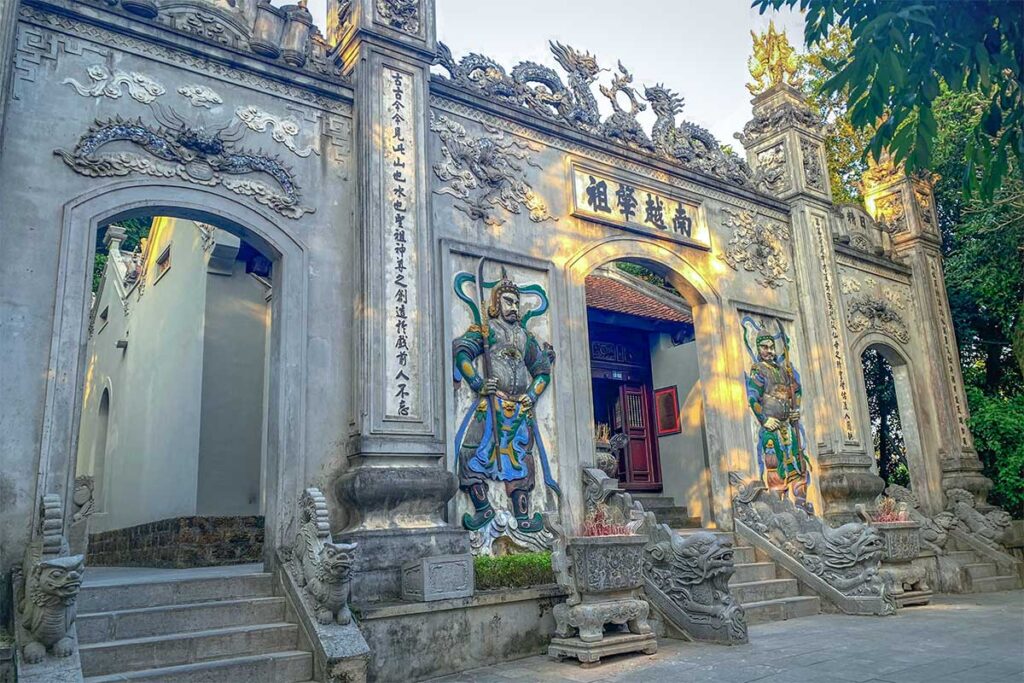
The most important site dedicated to the Hung Kings is the Hung Kings Temple complex in Phú Thọ province, about 85 km northwest of Hanoi. Set on Nghĩa Lĩnh Mountain, the complex includes several temples, a pagoda, and the High Temple at the summit, where visitors climb hundreds of steps to pay respects. The setting is as symbolic as it is scenic: being on a mountain emphasizes the Hung Kings’ spiritual connection to both earth and sky.
This is the national center of Hung Kings worship, where annual state ceremonies take place on the Hung Kings’ Festival. For Vietnamese people, it represents both a pilgrimage site and a reminder of their shared ancestry. For travelers, it offers not only history and legend but also a chance to witness one of Vietnam’s most meaningful traditions.
See our full guide to the Hung Kings Temple here.
Hung Kings Festival
What is the Hung Kings Temple Festival?
Every spring, the Hung Kings are honored with one of Vietnam’s most important celebrations: the Hung Kings Temple Festival. The main ceremonies take place at the Hung Kings Temple complex in Phú Thọ, but smaller commemorations are held in many other provinces as well.
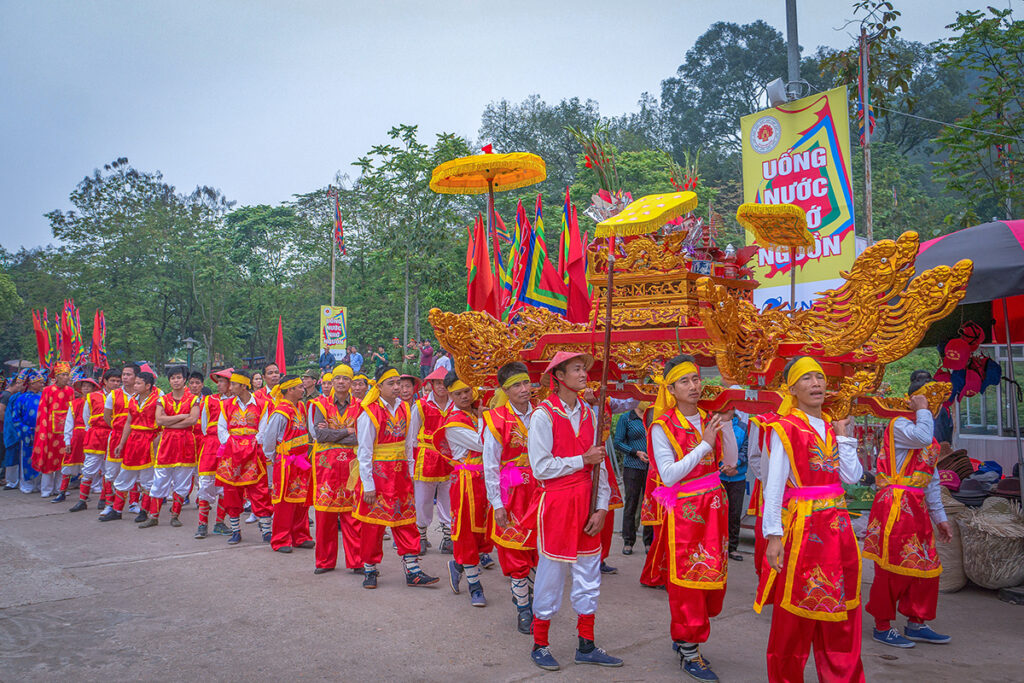
The festival spans several days, with the largest rituals on the 10th day of the third lunar month. Visitors can witness solemn offerings of incense, music, and traditional dances, alongside vibrant folk games, processions, and food stalls. It’s both a spiritual event and a cultural gathering that draws millions of Vietnamese every year.
See our full guide to the Hung Kings Festival here.
Hung Kings Day – official holiday in Vietnam
Since 2007, the Hung Kings’ Festival has been recognized as a national public holiday in Vietnam. This means offices, schools, and many businesses close for the day, giving people the opportunity to return to their hometowns or take a short holiday.
Where to find the Hung Kings in Vietnam today
If you’re curious to see how the Hung Kings are remembered beyond the main temple in Phú Thọ, there are still plenty of places across Vietnam where their legacy appears. From smaller temples to public statues and museum exhibits, these sites give you a more practical way to connect with the legend during your travels.
Temples outside Phú Tho
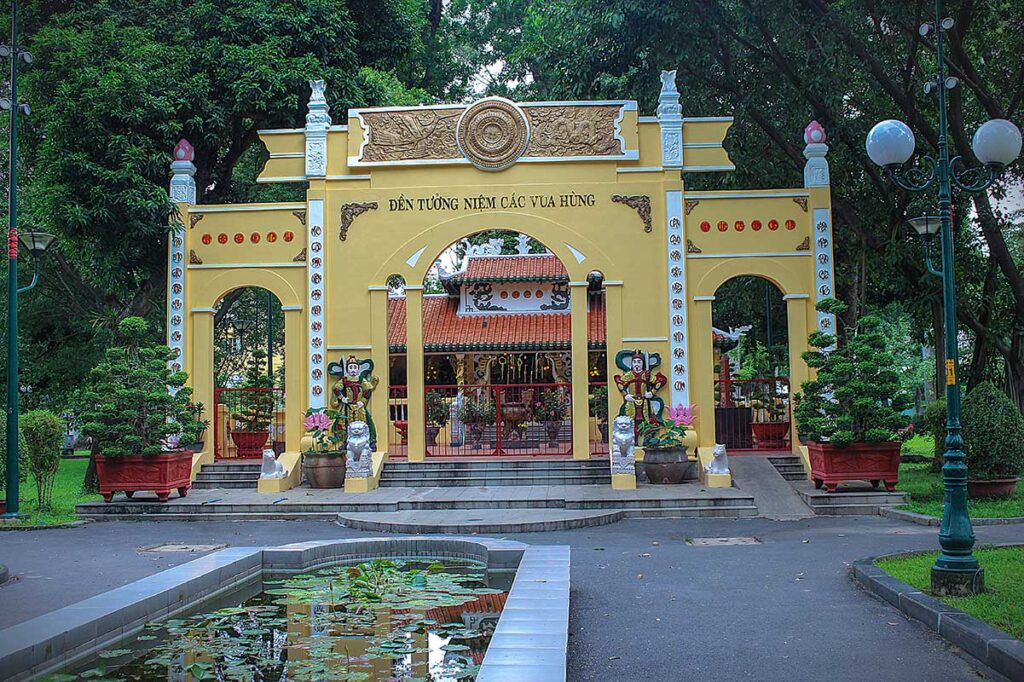
Tao Đàn Park, Ho Chi Minh City – A small Hung Kings Temple sits inside this central park, with a yellow three-gate entrance leading into a courtyard and shrine. It’s easy to miss, but worth a short stop if you’re exploring the park.
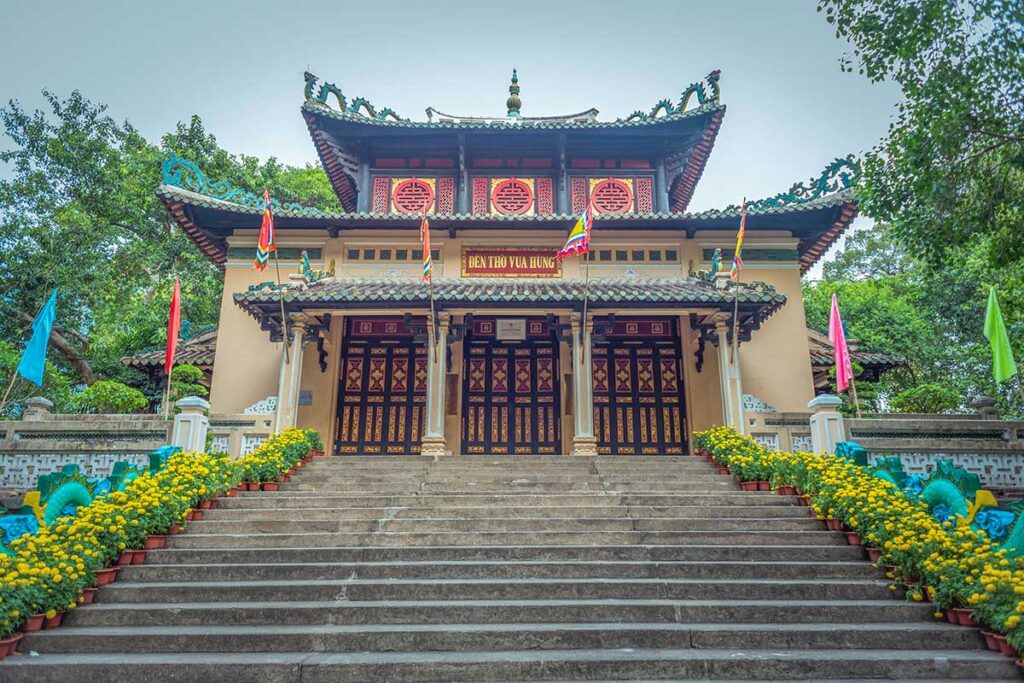
Saigon Zoo and Botanical Gardens, Ho Chi Minh City – Another Hung Kings Temple (originally built in the 1920s) stands within the zoo grounds. This one is larger, set on a small hill with stairs leading up to the temple itself.
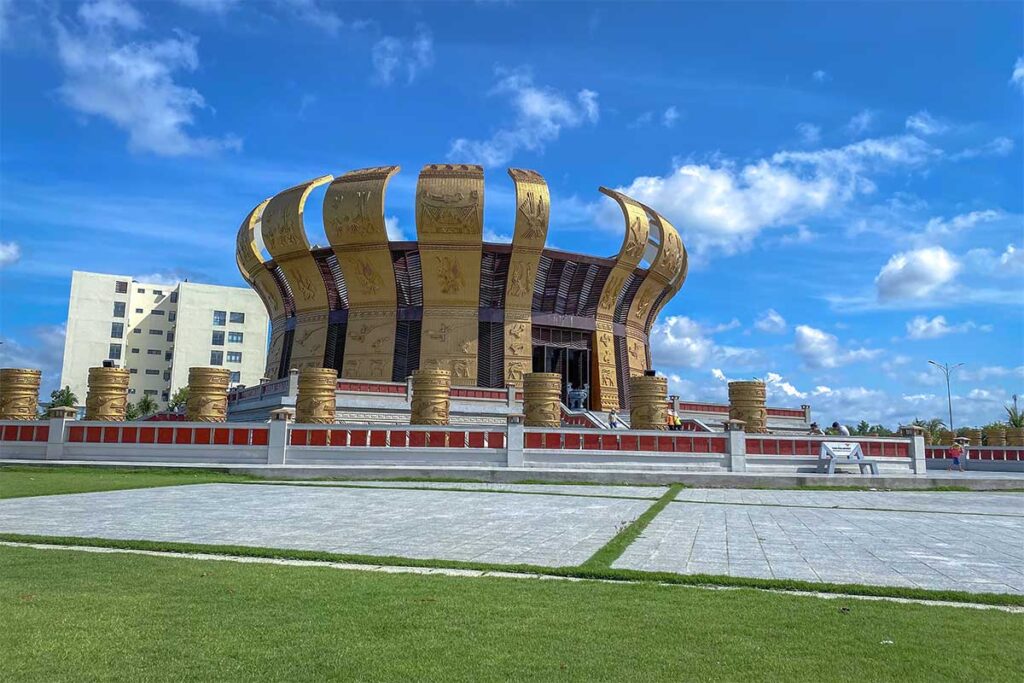
Cần Thơ – A more recent Hung Kings Temple was inaugurated in 2019, making it the most prominent site in southern Vietnam dedicated to them.
Statues & Monuments
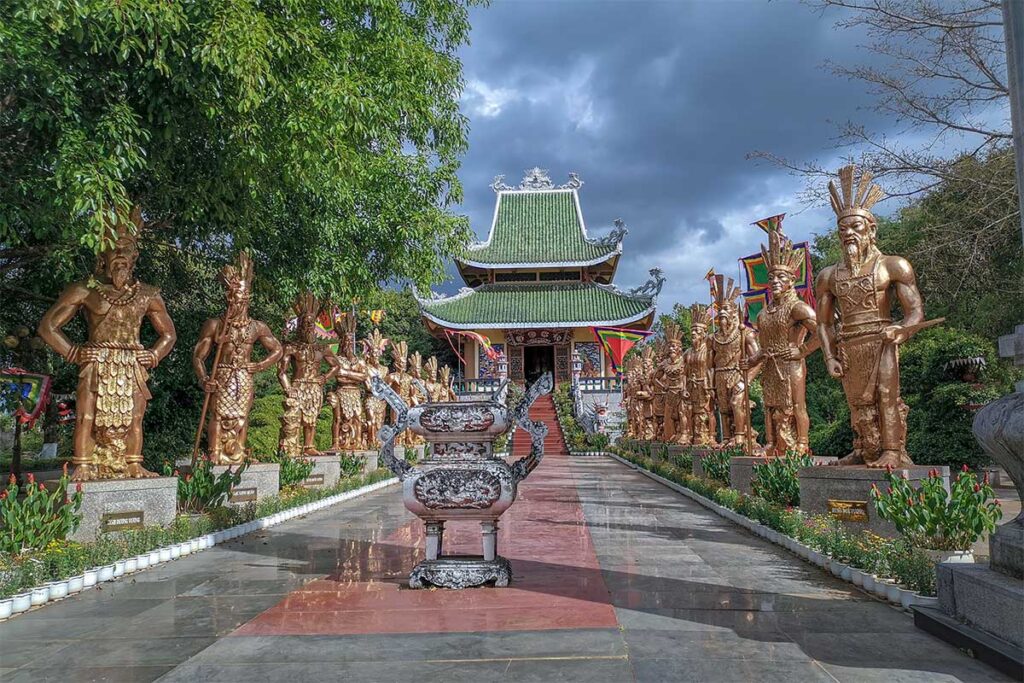
Đồng Xanh Park, Gia Lai Province – Features a row of statues representing all 18 Hung Kings, making it a unique spot if you’re traveling through Vietnam’s Central Highlands.
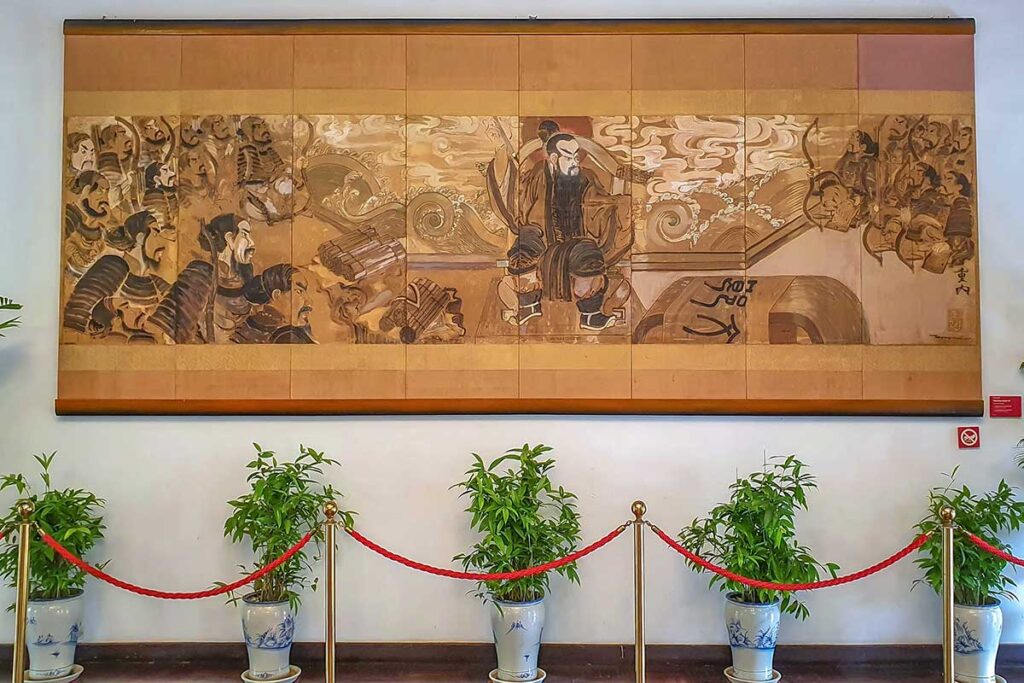
Independence Palace (Reunification Palace), Ho Chi Minh City – Inside the conference hall, you can find a large painting of the Hung Kings, another reminder of their place in Vietnam’s national story.
Museums & Exhibitions
- Vietnam National Museum of History, Hanoi – Exhibits on the Bronze Age and Đông Sơn culture provide archaeological context often linked to the Hung Kings era.
- Ho Chi Minh City History Museum – The first room is dedicated to Vietnam’s early history, beginning with the Hung Kings, with displays of artifacts and educational panels.
Namesakes
The Hung Kings’ symbolic role as national ancestors means their name appears everywhere in Vietnam. You’ll find schools, streets, and even a university named after them, especially in major cities. While not tourist attractions in themselves, they show just how deeply the Hung Kings are woven into daily life and memory.
Other famous figures in Vietnamese history
The Hung Kings are remembered as Vietnam’s legendary founders, but they are only the beginning of a long line of rulers and leaders who shaped the country. To put them into perspective, here are some of the most important figures from later periods of Vietnamese history:
- Lý Thái Tổ (974–1028) – The first emperor of the Lý dynasty. He is best known for moving the capital to Thăng Long (modern-day Hanoi), which became the political and cultural heart of Vietnam.
- Trần Hưng Đạo (1228–1300) – A national hero and brilliant general. He led Đại Việt to victory over the Mongol invasions in the 13th century, securing Vietnam’s independence.
- Lê Lợi (1385–1433) – A nobleman who led the Lam Sơn uprising against Chinese Ming rule. After years of resistance, he founded the Later Lê dynasty, ushering in a period of stability and growth.
- Gia Long (1762–1820) – The first emperor of the Nguyễn dynasty. He reunified Vietnam after centuries of division and established the last imperial dynasty, ruling from Huế.
- Hồ Chí Minh (1890–1969) – Revolutionary leader and first president of modern Vietnam. He spearheaded the struggle for independence against French colonial rule and became a symbol of national unity in the 20th century.
